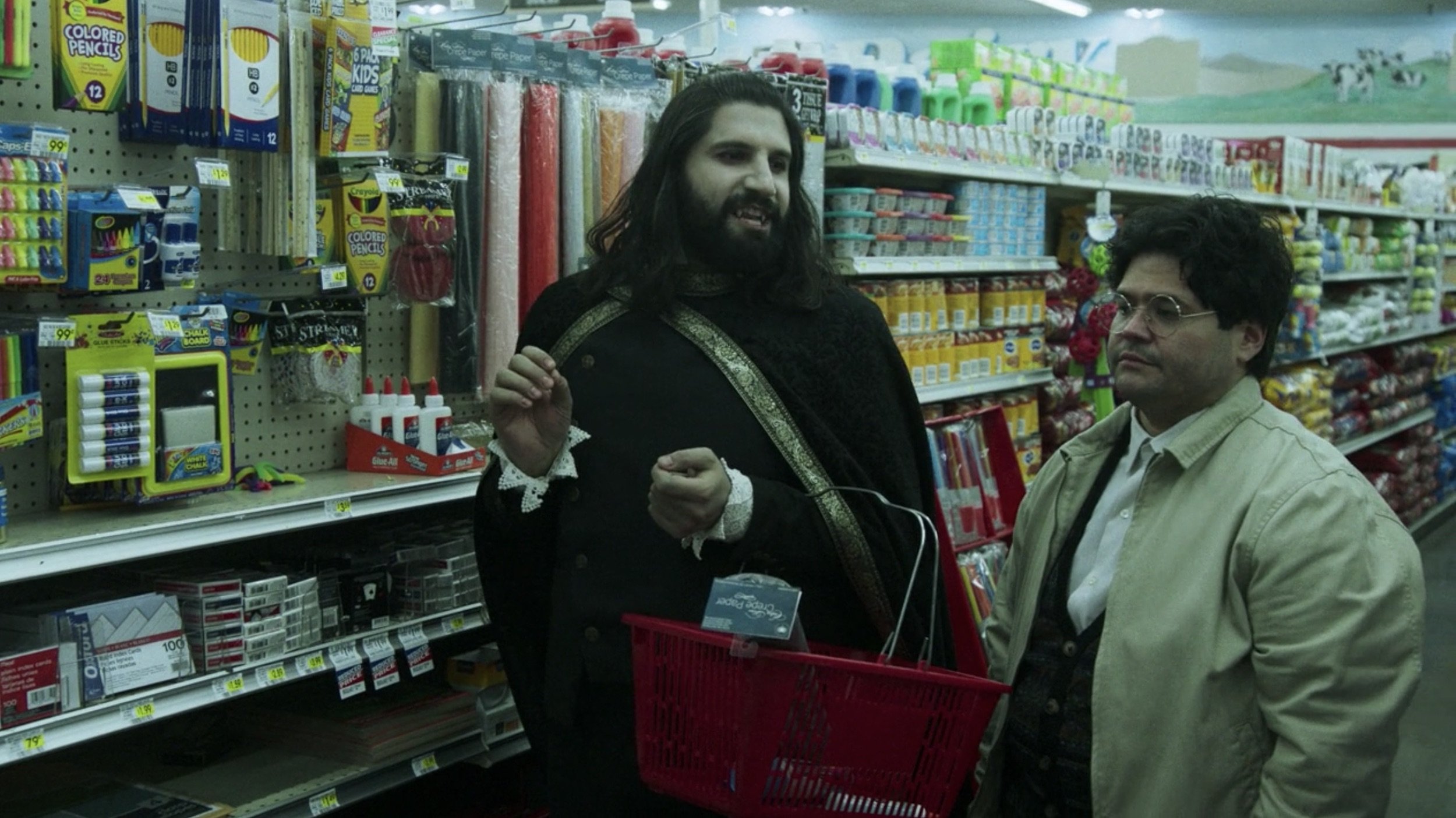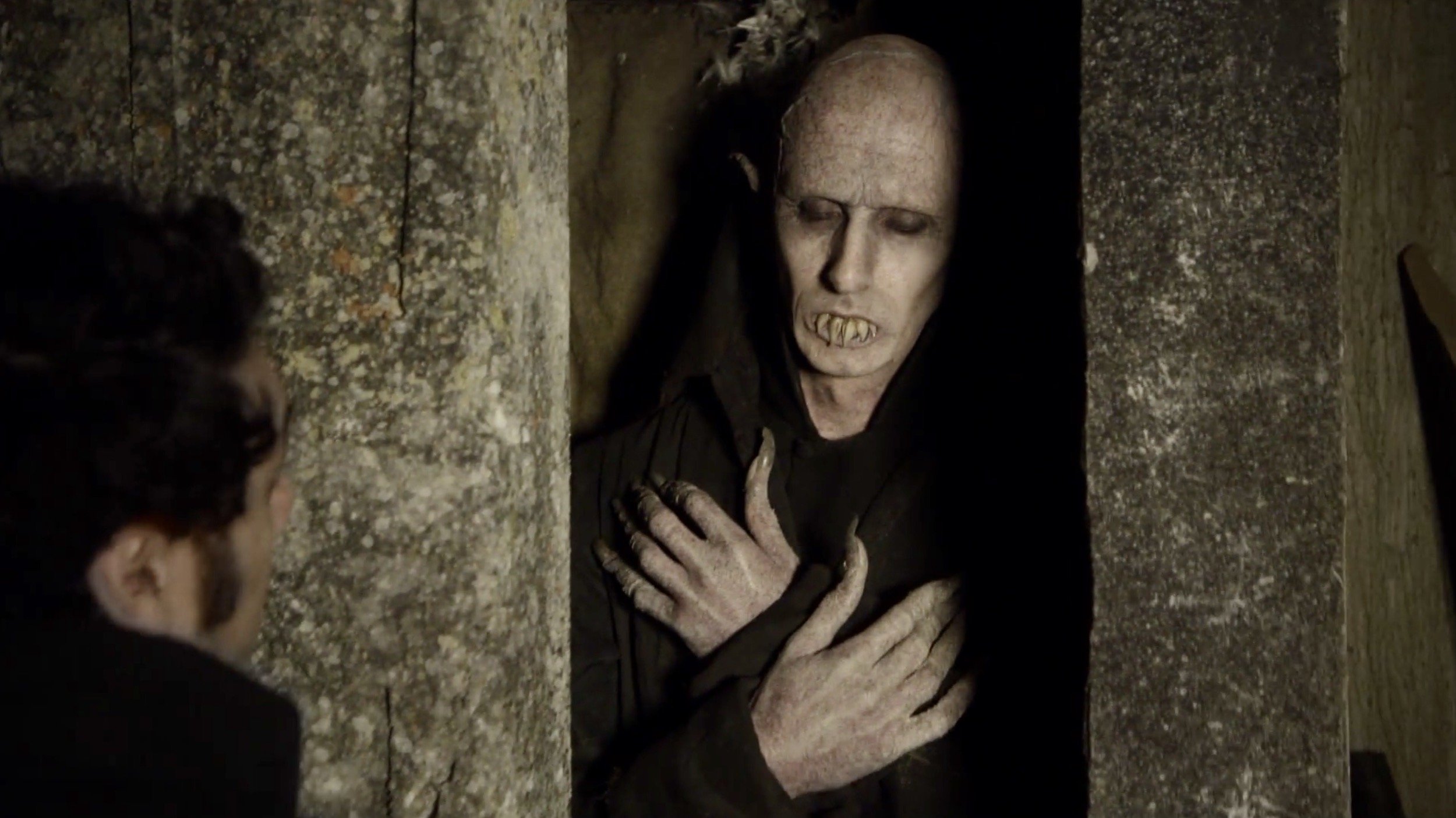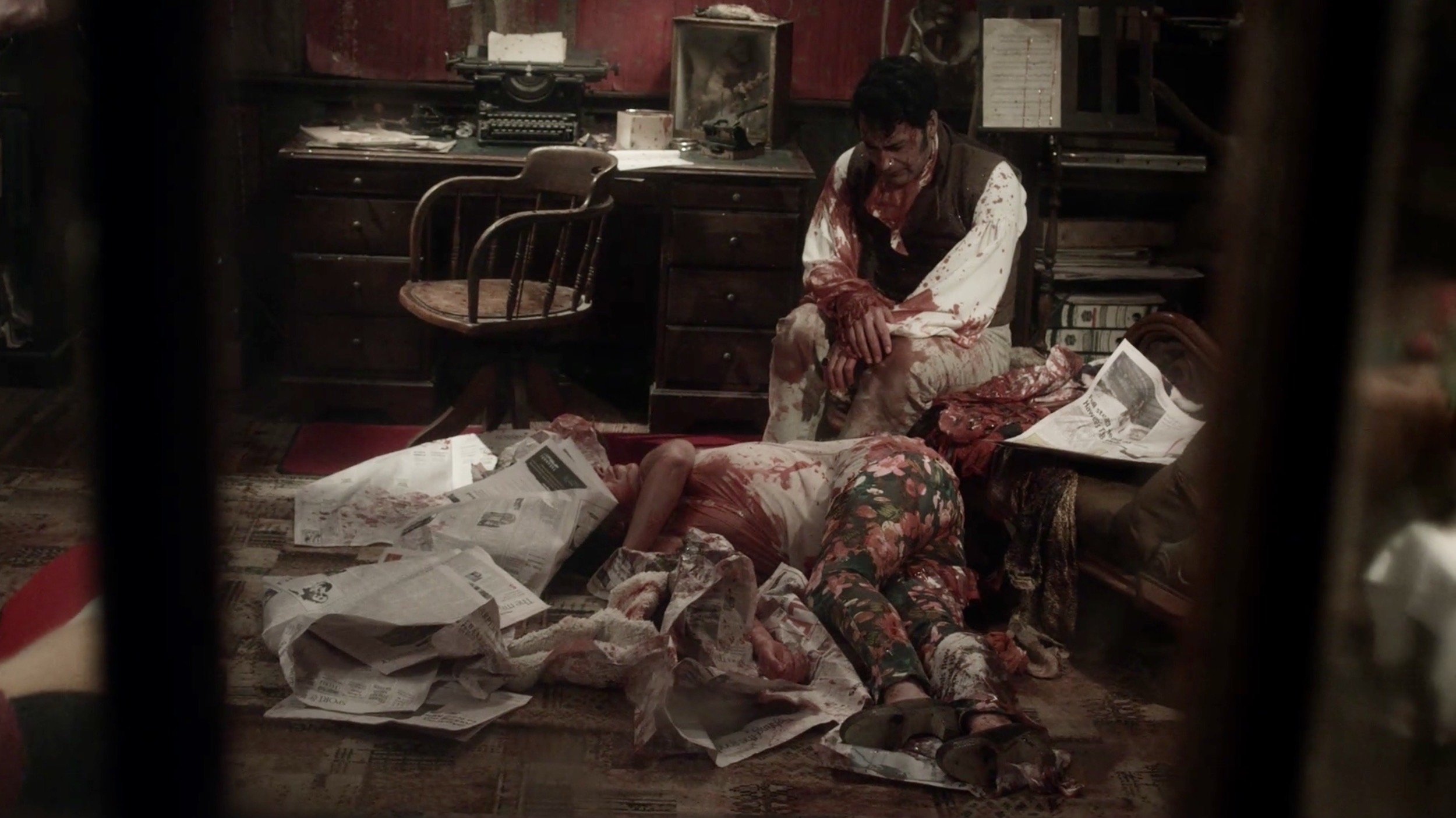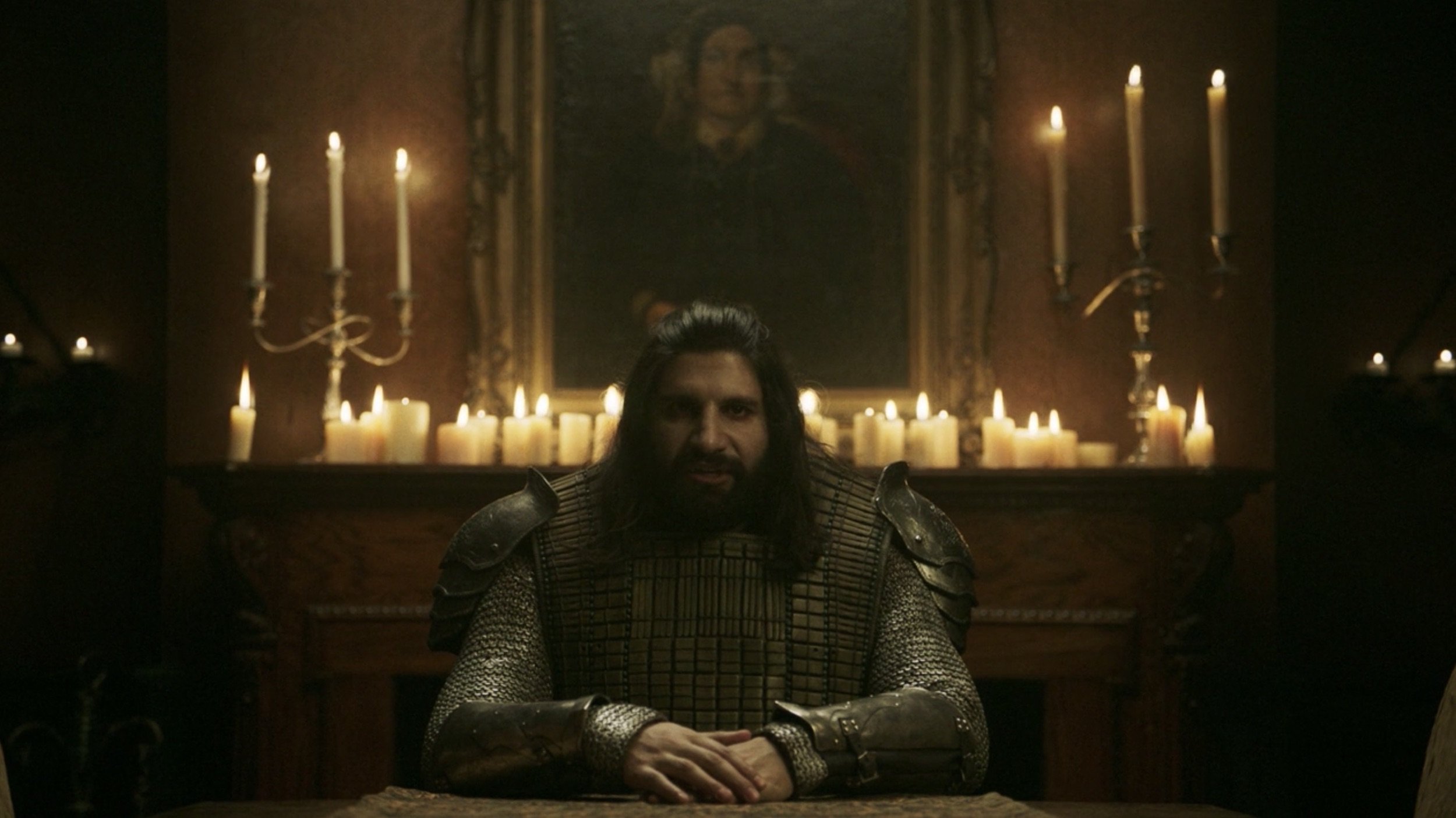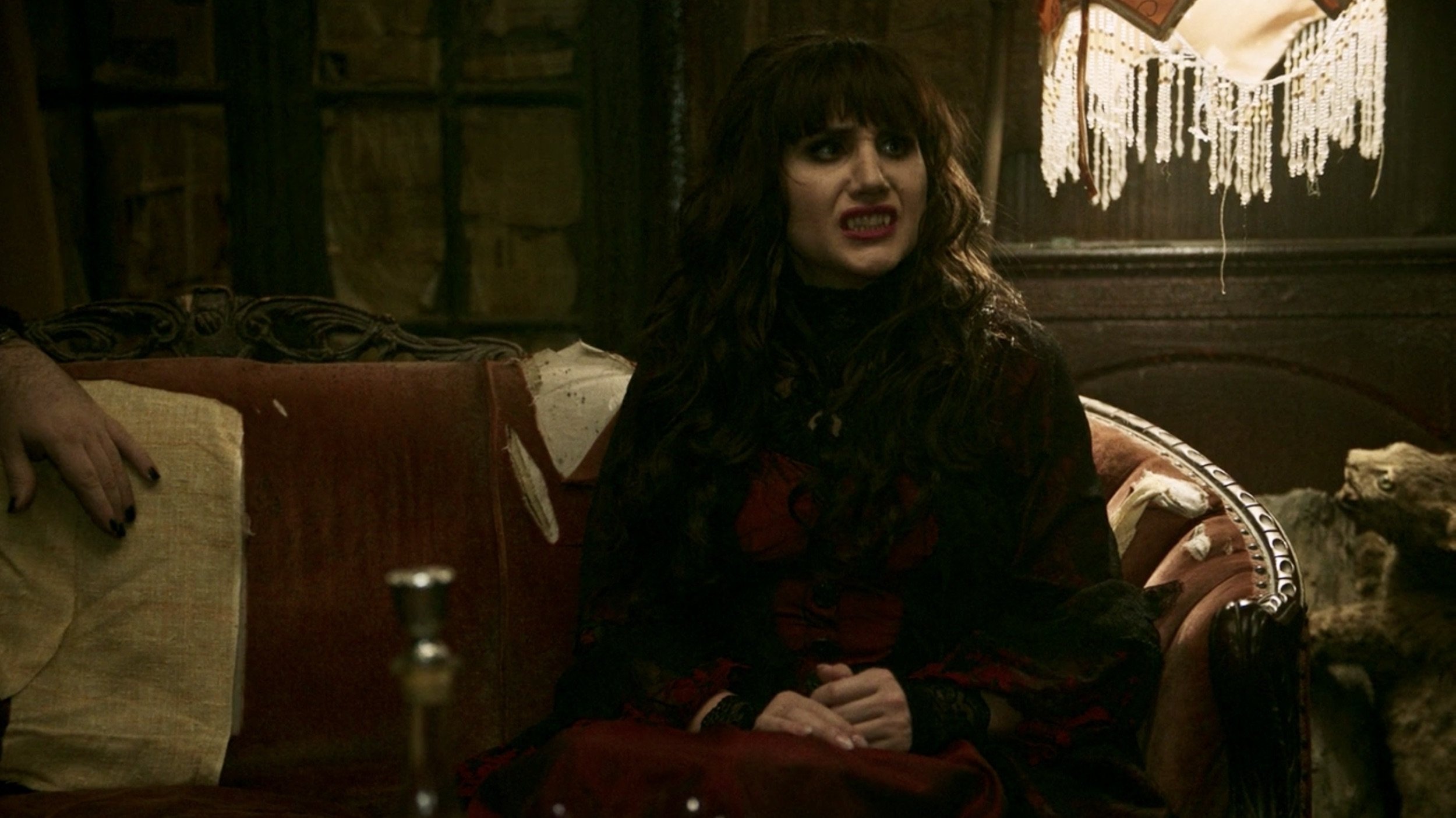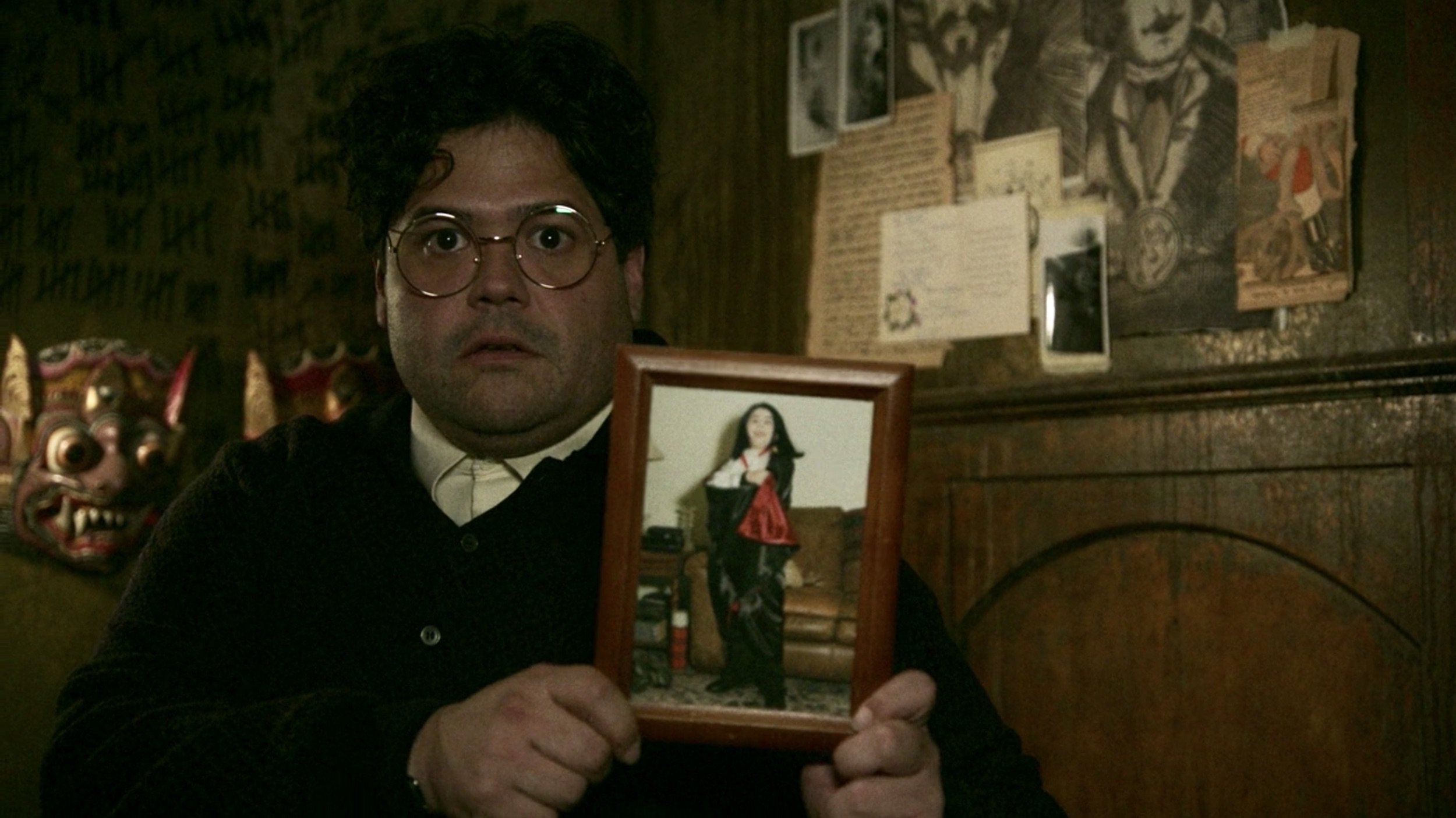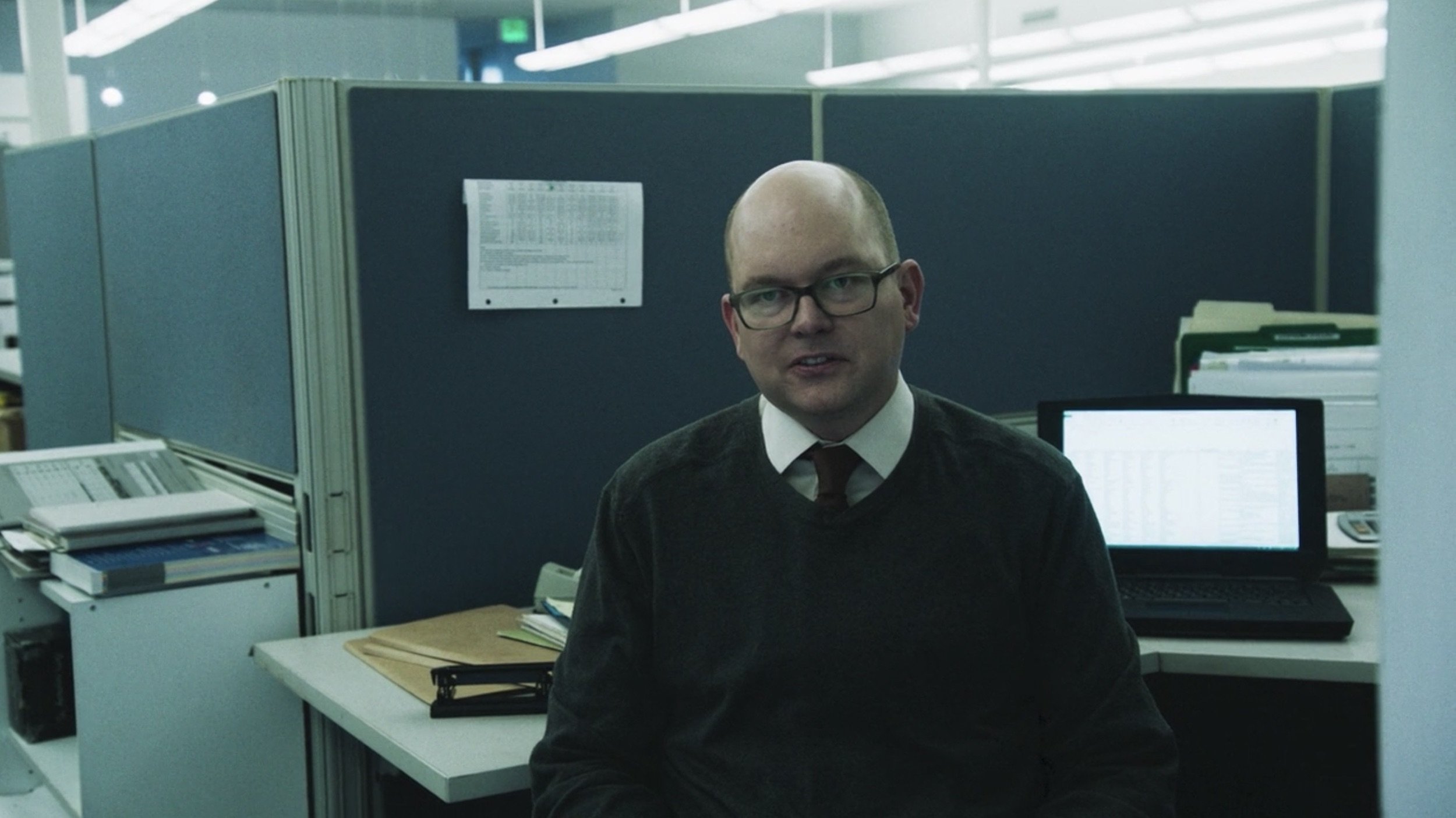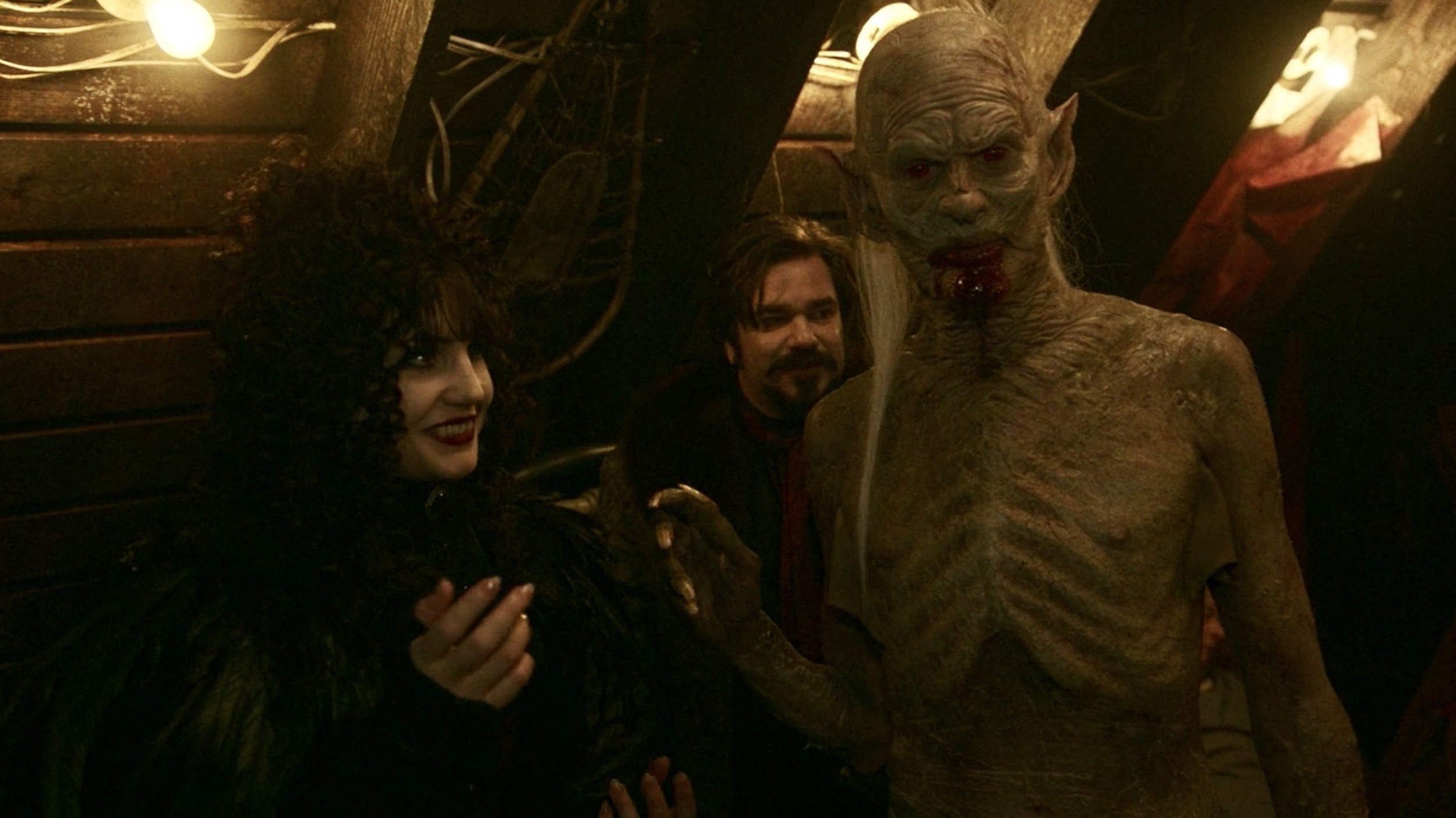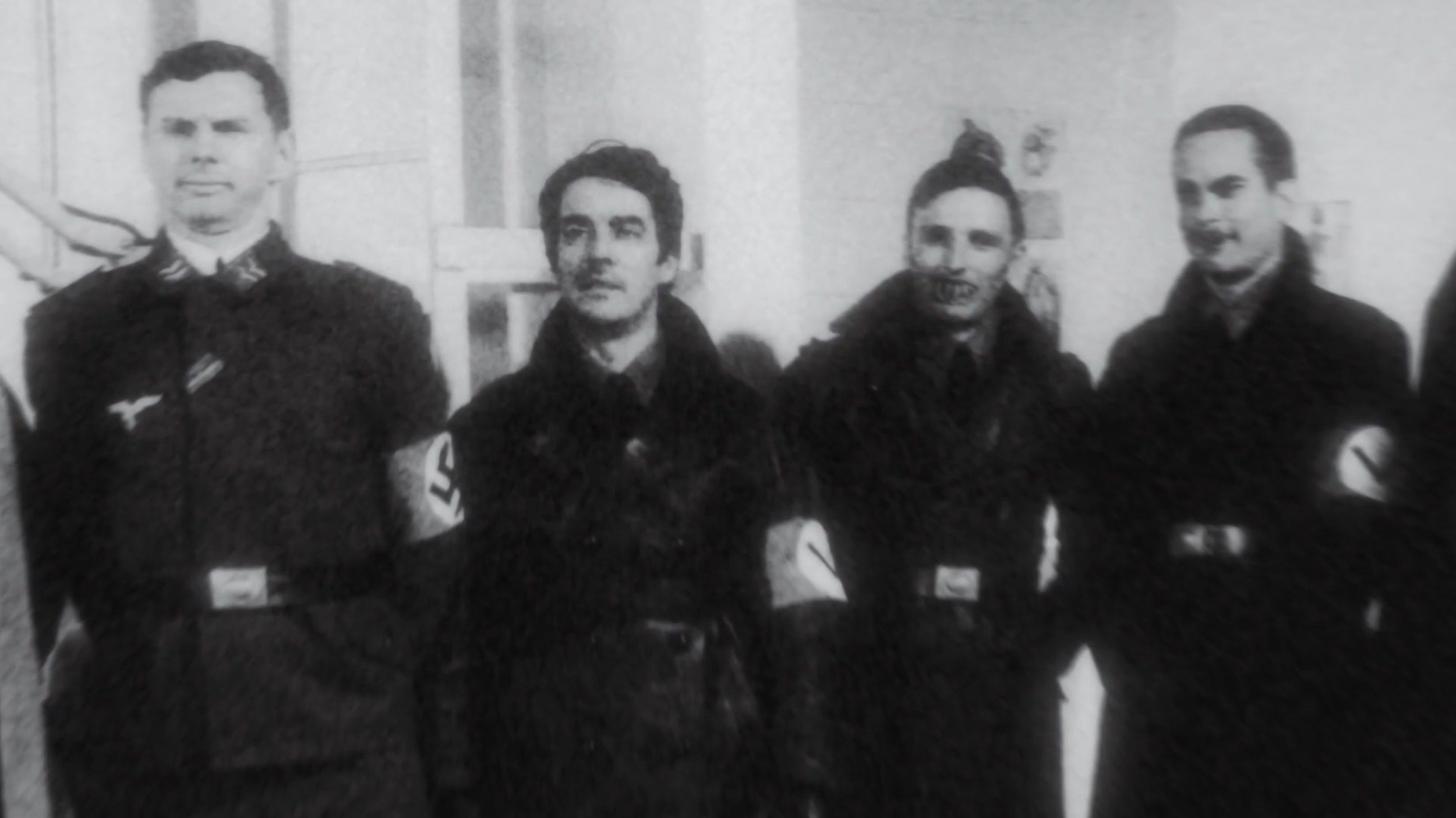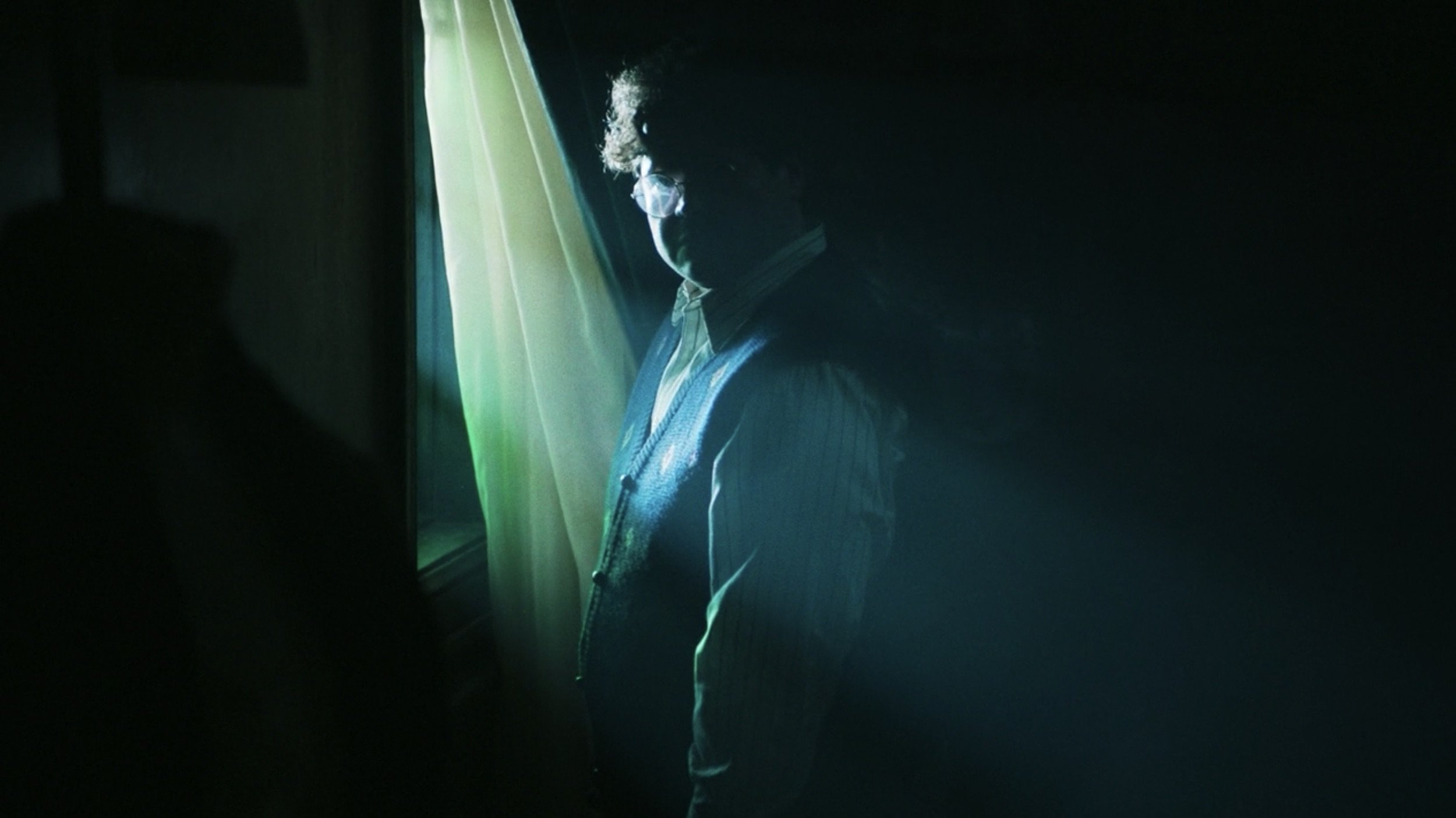Hot Take: ‘What We Do in the Shadows’ Milks Vampirism for Sitcom Laughs, But What About Its Human Victims?
Editor’s note: this article was originally posted after the series premiere of What We Do in the Shadows on March 27, 2019. We are reposting it here as part of the overall vampire movie centennial.
However, this article, which is obviously tongue-in-cheek in parts, needs to be understood within the feverish cultural climate of early 2019. It was a time not so far removed from late 2017 when the Weinstein effect swept through Hollywood. Furthermore, the 45th McTweeter-in-Chief was still in office. For all we know, he himself was a vampire, with a daylight decoy body-doubling for him (hence the orange spray-on tan).
What We Do in the Shadows is a beloved show that has made people laugh all across the country. That doesn’t make it immune to criticism and that doesn’t mean it should *seriously* be scapegoated for all the evils of the world.
An Anti-Vampire Review of ‘What We Do in the Shadows’
In this world, there are vampires and there are victims … and vengeful survivors. Too many bloodsucker tales uphold the power dynamic of vampire-over-victim. They reduce humans to nosferatu fodder.
What We Do in the Shadows, the new half-hour show based on the 2014 mockumentary of the same name, is one such tale. It made its series premiere on FX last night with an episode written by Jemaine Clement and directed by Taika Waititi. These same two Kiwis co-wrote, co-directed, and co-starred in the film together.
Here in 2019, they’re looking like the elder statesmen (emphasis on “elder” and “men”) as they marshal a veritable F Troop of fresh, foul-mouthed characters. Clement, the villainous coconut crab in Disney’s Moana and one-half of the seemingly non-threatening parody-folk duo, Flight of the Conchords, also serves as showrunner. Once again, he’s chosen to use his crustacean wiles and crusty humor for evil instead of good.
If you listen closely, the title of Clement’s latest TV effort, What We Do in the Shadows, chimes like a riddle, laced with succulent intrigue. Yet there’s a very simple answer to the question it poses.
The answer is: they kill people. That’s what the vampires do in the shadows. That’s what the show tries to candy-coat because it’s too craven to confront such terrible truths or any of the issues that really matter to today’s Twitter users.
Vampires Are Bad Dates
Do we know for sure that Clement and Waititi aren’t really vampires? I mean, has anyone ever seen them out in public during the daytime? Creatively, they seem content to play familiars or vampire enablers, licking the boots of bloodsuckers, normalizing their misdeeds.
First, they did it in theaters five years ago, when they showed us, among other things, a scene of murder and metaphorical date rape—before zooming right in over the dead woman’s body, leaving her and her extinguished travel dreams out of frame as the camera focused on her socially awkward killer in the bloody aftermath.
Now, they’re here to do it again all over the shag rug in front of your boob tube. Swell place for a vampire orgy. By which I mean, fie upon this show. And fie upon the reviewers and Renfields who are falling all over themselves in praise of it.
Let’s do what it says on the Motion Bitcher tin and have ourselves a little exercise in hyperbolic contrarianism, taking an in-depth look at all the ways What We Do in the Shadows fails humanity.
I realize this may be one of those shows that, on the basis of brand-name loyalty, develops a defensive fandom around it. So, just to make it doubly clear what you are getting into: I am going to review this show from an anti-vampire perspective.
If, at any point, you start to feel like you’re reading the words of some humorless Grand Inquisitor who wants to bring about the death of art, feel free to click away to a cat video or something. No, seriously, go with my blessing! My only parting question for you would be: what have you got against being Inquisitive?
Real Interviews: Not a One-Way Street
What We Do in the Shadows introduces us to three vampire roommates whose house on Staten Island is meant to be fun for the viewer, like an amusement park attraction. Unfortunately, the place is a house of horrors worthy of H.H. Holmes at the Chicago World’s Fair. It’s Three’s Company meets Saw in the most nefarious way possible.
The first episode, prosaically titled “Pilot,” shies away from the uglier facts of vampirism in favor of dubious comedy horror. Most people watching it will probably find it funny rather than scary. Personally, I do feel twinges of horror watching it, though I’m not sure if it’s the way anyone intended.
Documentaries can be self-serving since they allow their makers to cherry-pick information and footage that suits their agenda. This only takes the guise of one, but in it, the monsters get to tell their story (or spin their web of lies) while joking about the humans they’ve drunk and dispatched offscreen. They’re part of a growing franchise that includes Wellington Paranormal, an antidote series about courteous cops that hasn’t aired in the U.S. because we prefer more realistic shows.
The franchise began with the short film, What We Do in the Shadows: Interviews with Some Vampires. Unlike the actual Interview with a Vampire, however, there’s no interviewer character, a Christian Slater type (maybe because vampires fear Christian artifacts?)
When these bloodsuckers look into the camera, we never hear a voice giving pushback or challenging them. The show instead roots itself in the cinéma vérité style whereby the camera becomes a fly on the fourth wall. It’s not afraid to break said wall on occasion but most of the time, it immures the viewer within it like the unfortunate Fortunato in Edgar Allen Poe’s “The Cask of Amontillado.”
A legit interview would be a spirited back-and-forth between an interviewee and an interviewer—who wasn’t going to throw softball questions. The talking-head segments in What We Do in the Shadows are more like the understated monologuing of various villains. If the first episode is meant to establish the show’s tone, as pilots tend to do, then it looks like these vampires will be walking on easy street, interview-wise.
Nadja and the One Relatable Human
There’s actually a fourth vampire in “What We Do in the Shadows,” but he’s the d’artagnan of this hell house. For now, I’ll limit the roll-call to Nandor (Kayvan Novak), Nadja (Natasia Demetriou), and Laszlo (Matt Berry).
So nice of them to let a token vampiress join the bloodsucking boy’s club. Allow me to flip the script on this sausage fest, though, and turn it into a little wiener roast. Next to Nadja, the he-vamps of What We Do in the Shadows are all scrubs who couldn’t charm their way out of a brown paper bag.
Guillermo, the beleaguered, bespectacled familiar played by Harvey Guillén, is the first and last face on-camera in the premiere. His name and appearance are a clear nod to Guillermo del Toro (who is no stranger to the vampire genre, having directed Cronos and Blade 2 along with the pilot of his own FX vampire series, The Strain).
Maybe the writers’ room purposely engineered Guillermo to be an audience surrogate because they knew the show needed a human to guide us into this upside-down world where the villains are framed as heroes. After all, a lot has happened in the entertainment industry in the five years since the What We Do in the Shadows movie.
Anecdotally, I wrote my first paid professional film review in October 2017, a historic month that wound up being ground zero for the Weinstein effect and #MeToo movement. It forced me to re-examine the entire cultural construct around me. Pale, patriarchal vampires preying on beautiful young women: they were part of that lie.
In a world of fallen idols, the only respectable course of action was to disavow being a fanggirl (my preferred portmanteau for vampire fangirls). So I did, and you can understand why I immediately found myself latching onto Guillermo, the one nonexpendable human in this guano-filled bat circus called What We Do in the Shadows.
Guillermo del Chore-o
When night falls, Guillermo del Chore-o is there beside his master Nandor’s coffin, lighting candles and jimmying the lid off with a butter knife so the vampire can rise from his daytime slumber and make a dramatic entrance. Guillermo’s other chores include disposing of bodies, boarding windows to keep out sunlight, and rounding up virginal LARPers to feed guests. (To Melissa, Maribeth, and my friends in the LARPing community, were any of you bothered by the implication that you’re all sexless dweebs?)
As a cosplaying youngster, Guillermo idolized Antonio Banderas for the Hispanic representation he brought to Interview with the Vampire. This is why he now serves a vampire. He’s a poor, misguided vampire wannabe.
It’s reminiscent of a real-life Hollywood story where an assistant has to endure the boss from hell while trying to climb the industry ladder. Guillermo’s not exactly “swimming with sharks,” per the 1994 Kevin Spacey film about an abusive producer’s corrosive influence on his personal assistant. More like “flying with bats” or “squirming with rats.”
For ten years, Guillermo has diligently served Nandor, who furnishes genial quips about all the pillaging he did when he was a soldier in the Ottoman Empire. Nandor is the kind of vampire who calls house meetings and sits in a suit of armor addressing the camera by candlelight. He orders Guillermo around, shushes him, and just generally treats him like a second-class citizen.
Guillermo says, “Being a vampire’s familiar is like being a best friend, who’s also a slave.” What he fails to recognize as he so carelessly utters that word is that his vampire idol Antonio was palling around with a genuine slaveowner. Lest we forget, Brad Pitt’s morose narrator, Louis, in Interview with the Vampire had his own plantation in the Antebellum South. Thandie Newton of Westworld played one of his slaves.
It’s obvious Nandor is just using Guillermo with no intention of making him a vampire outside one glittery gift portrait. The human is just there to be an indentured servant as the vampire and his bumbling cohorts try to navigate the modern world. Tablets don’t register their fingers and they don’t want to sign anything without a quill.
The Subtle Art of Victim Blaming
Spare a word for Nadja and Laszlo, the libidinous married couple. Nadja groans and rolls her eyes at Nandor; Laszlo gets into hiss-offs and hover-offs with him. These confrontations arise over the issue of half-drunk people causing noise in the house. “They had been half-drunk,” Nandor clarifies. “Please, finish a whole victim before moving onto a next one.”
At one point, Nadja and Laszlo, the lady and gentleman vampire, are walking through the park at night. Laszlo tips his tophat to a passing couple, only to hear the other guy say, “Go back to your own country!”
It’s one of those moments where the overfed viewer (not so much a culture vulture as a culture vampire) can feel the grinding gears of audience manipulation at work. Because of course, this pending vampire victim would have to be a xenophobic jerk who provokes Laszlo. That’s the only way the show can get away with what comes next.
Nadja and Laszlo have just related to the camera how they fled from Europe two centuries earlier because their kind (the undead) faced prejudice there. Nadja concedes “the fact that we killed and ate people” may have had something to do with it.
In the park, they decide to likewise kill and eat the man who insulted them. So they fly him up into the air and slaughter him, drinking some of his blood and dumping the rest on his girlfriend’s head like a bucket of Nickelodeon slime.
Again, this is a comedy, which admittedly does elicit chuckles. Yet the moment is dramatized such that it functions as a sort of wicked wish fulfillment for the viewer. If you think about it, there’s almost a victim-blaming rationale to it. It’s a scene that hinges on us accepting that the guy who died had it coming.
Most of us wouldn’t react to an insult by killing someone. These are vampires, however, so it’s on point for them to do bad things. As TV characters, they’re free to act on their worst impulses without consequence.
A Sitcom That Sucks (Blood)
Nadja and Laszlo revel in the act of killing. In fact, it makes them horny for a quickie “right next to the public toilet.” Nothing like a little homicide to spice up your love life, eh? You murderers.
Alas, after being married for so long, they’ve also got something like the seven-century itch. We soon learn that Nadja is having an affair, emotionally if not physically. When Laszlo transforms into a bat and flies off, she goes behind his back, stalking a human named Jeff (Jake McDorman). She believes Jeff is her reincarnated ex-lover. We see her scamper up the side of a building and take a flashbulb photo of him as he gets up to some onanism, pleasuring himself in bed.
Later, they stroll the sidewalk together and she moans with relish at the transgressive thought of beheading him during sex, then continuing to ride his body until her needs are met. Meanwhile, Laszlo, the cuckold, sits at home, playing, “Nadja’s Theme,” on the harpsichord.
It’s not quite clear, from the context of one episode, whether Nadja and Laszlo have an open marriage. The pilot suggests he’s unfaithful to her, too. So, not only do they kill people; they also cheat on their spouses.
Antiheroes are nothing new in the Peak TV era, yet now they’ve infiltrated our sitcoms. I hate to be a stick in the mud, but this sure ain’t Nick at Nite. Even if vampires are night creatures, prone to nicking human arteries.
What We Do in the Shadows banks on the principle that a character need not be likable, only interesting. It’s what enabled The Wolf of Wall Street to build a 3-hour movie around the yacht-crash antics and Lamborghini DUIs of a shameless financial crook, one-percenter, dwarf-tosser, and wife-beater while relegating his FBI foil to a single sad-sack POV scene on the subway.
The vampires in What We Do in the Shadows do sustain interest with their larger-than-life personalities, but there’s another tactic the show uses to get us on their side. With the news giving daily reminders of a society overrun with Trumpian bad behavior, who in their right mind would root for these vampires … unless there’s something worse than them out there?
The Lesser of Two Vampires
In the house with Nandor, Nadja, and Laszlo is the fourth musketeer, Colin Robinson (Mark Proksch). He’s the dreary, day-walking energy vampire, who roams the cubicles in his office, draining people’s energy with boring convos. “You probably know an energy vampire,” he says. “We’re the most common kind.”
Colin Robinson can also feed on other vampires. The show thereby establishes him as a bigger bad than his roommates. Making him a threat — and them, his victims — shifts our sympathies, just as the coming of the monstrous Baron Afanas (Doug Jones) does.
Before we see the Baron in person (not that he is a person), Nandor reads a letter teasing his arrival. They talk him up like the two hitmen do with Marsellus Wallace in Pulp Fiction. (Wallace was human, but the same screenwriter, Quentin Tarantino, used a similar tactic to get us rooting for another pair of killers, the Gecko brothers, as they faced off against vampires in From Dusk Till Dawn).
Soon, the ship with the Baron’s sarcophagus docks like the Demeter in Dracula, except it’s come to subjugate the New World. Just call him Christopher Columbus. Maybe he’ll get his own federal holiday in the vampire nation, where they’ll do the “Blood Barrel Polka,” singing, “Roll out the barrel … we’ll have a barrel of blood …”
Boulevard of Bloodsucked Dreams
Speaking of ships, if you ask me — and no one did — What We Do in the Shadows is the vampire stowaway aboard the sinking Titanic that is America. It’s the crate full of rats carrying the plague, both a symptom of moral rot and a harbinger of eldritch doom.
It farts out the back of its onesie as it baby-steps us toward the death of altruism in what has become an increasingly me-first culture, where we’re all too eager to cheer for bullies. It furthers the primacy of predators in the stories we tell ourselves.
Basically, this show is everything that’s wrong with the world, distilled into a sitcom that weasels us into believing the bad guys are a bundle of laughs. But I could be wrong …
Upon exiting his sarcophagus, the Baron lunges straight for the neck of Nadja and Laszlo’s redshirt familiar, June (Mary Gillis). That can’t bode well for Guillermo.
Suddenly, there’s a new, even bigger big bad in the Staten Island vampire underworld. The three other fiends, even Colin Robinson, don’t look so evil by comparison. Makeup worthy of a serious horror flick bestows the Baron with pointy ears, red eyes, leathery skin, skeletal ribs, and clawed fingers.
The episode ends with Guillermo, the underappreciated lackey, pulling back the drapes, passively-aggressively letting sunlight hit Nandor’s closed coffin. A credits scene reveals that he didn’t do a good job of keeping sunlight out of the attic where the Baron bunks, either. I couldn’t help but think: Guillermo deserves better than these bloodsuckers.
The Nazi Vampire Next Door
In the original What We Do in the Shadows movie, there’s a scene where the new nosferatu, Nick (Cori Gonzalez-Macuer), bumps into an unnamed vampire hunter at a bar. Said hunter is only seen once more, when he shows up dead in the basement of the flat Nick shares with his vampire bros.
One dude, Deacon (Jonathan Brugh), comes with the added bonus of a Nazi backstory. It’s meant to be a joke, obviously, but is it funny? Hanging out with Nazi vampires: all in good fun, or a sign of the times?
They find the poor dead vampire hunter with his head twisted around backward. Evidently, he became the victim of a freak accident while breaking in. His ignominious fate is nothing more than a throwaway gag, but you have to wonder about that vampire hunter. Did he have a family? What was his story?
Think about how brave and enterprising you’d have to be to sneak into a vampire’s den. There’s a world where that character, the hunter of vampires and protector of humans, is the hero of his own movie or TV series like Blade or Buffy the Vampire Slayer.
Unfortunately, this world, ours, is not that one. Blade and Buffy have gotten “a little too long in the tooth,” per the old Donal Logue joke. They’ve retired, leaving a bountiful harvest of vampire-centric stories in their absence.
The predators get more media play than their prey. We glorify the vampires, the villains, while their victims suffer in the shadows.
What We Don’t See in the Shadows
Waititi’s last directorial effort, Thor: Ragnarok, brushed up against the horrors of colonialism. It showed the Marvel superhero, Thor, how his own Asgardian space civilization was built on a foundation of lies and conquest. With that in mind, it feels regressive for Waititi to spearhead a show that glosses over the true murderous nature of vampires.
Never forget: Thor’s rocky alien companion, Korg, voiced and mo-capped by Waititi himself, once handed him a fork useful for fighting off three vampires at a time. Nice little Easter egg, considering Waititi’s vampire, Viago, the proto-Nandor, probably hates Easter and eggs (especially ones cooked sunny side up).
The fundamental problem with What We Do in the Shadows, the TV series, is that it reneges on its own title. It promises to demystify the vampire, only to defang it and leave the darkest shadows in its murder basement unexplored. Nandor, Nadja, and Laszlo inhabit a slaughterhouse where corpses are conveniently out-of-focus and desperate captives are quickly put out of sight—hidden away in rooms where they’re chained.
To the vampires, humans are as disposable as bacon fat. Their lives mean nothing. All I’m saying is, let’s talk about those other shadows, the ones off-camera, perhaps on the cutting-room floor. Or should I say, the kill floor, which remains slippery with all the blood spilled by 21st-century monsters, left to hog the limelight as the ship goes down in these Divided States?
Thank you for reading my jeremiad against the evils of sitcom vampires. This has been a Renfieldian rant, brought to you by Motion Bitcher.
